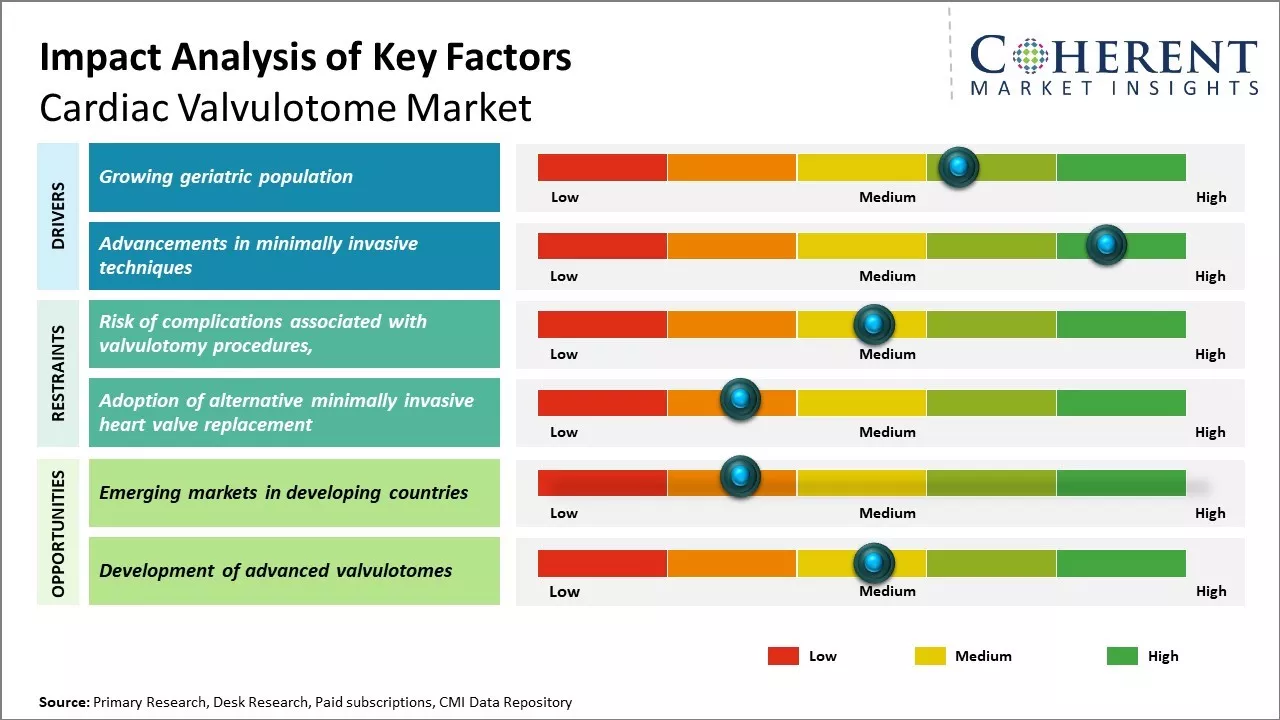The cardiac valvulotome market is estimated to be valued at USD 121.3 Mn in 2025 and is expected to reach USD 167.3 Mn by 2032, exhibiting a compound annual growth rate (CAGR) of 4.7% from 2025 to 2032.

To learn more about this report, Request sample copy
The cardiac valvulotome market is expected to witness positive growth over the forecast period. This can be attributed to the rising geriatric population worldwide who are more susceptible to cardiac disorders. Additionally, growing awareness about structural heart diseases and availability of more minimally invasive treatment options are further expected to support the market growth. However, risks and complications associated with valvuloplasty procedures and product recalls may hinder the market progress to a certain extent. Overall, innovations to develop safer and more advanced valvulotome technologies will continue driving the market growth during the forecast period.
Growing Geriatric Population
The global population is aging at an increasing rate. According to the UN World Population Prospects report, the number of people aged 65 years and above is projected to grow from 703 million in 2019 to 1.5 billion in 2050. As age advances, the risk of various cardiovascular diseases also rises exponentially. Cardiac issues such as valvular heart diseases are more commonly seen in elderly people. With life expectancy increasing worldwide, the pool of elderly population at risk of developing valvular abnormalities is rising rapidly. This acts as a prominent driver for the cardiac valvulotome market. Manufacturers are developing more advanced valvulotomes catering to the special needs of the geriatric patient group such as those with comorbidities or requiring less invasive procedures.
Joining thousands of companies around the world committed to making the Excellent Business Solutions.
View All Our Clients